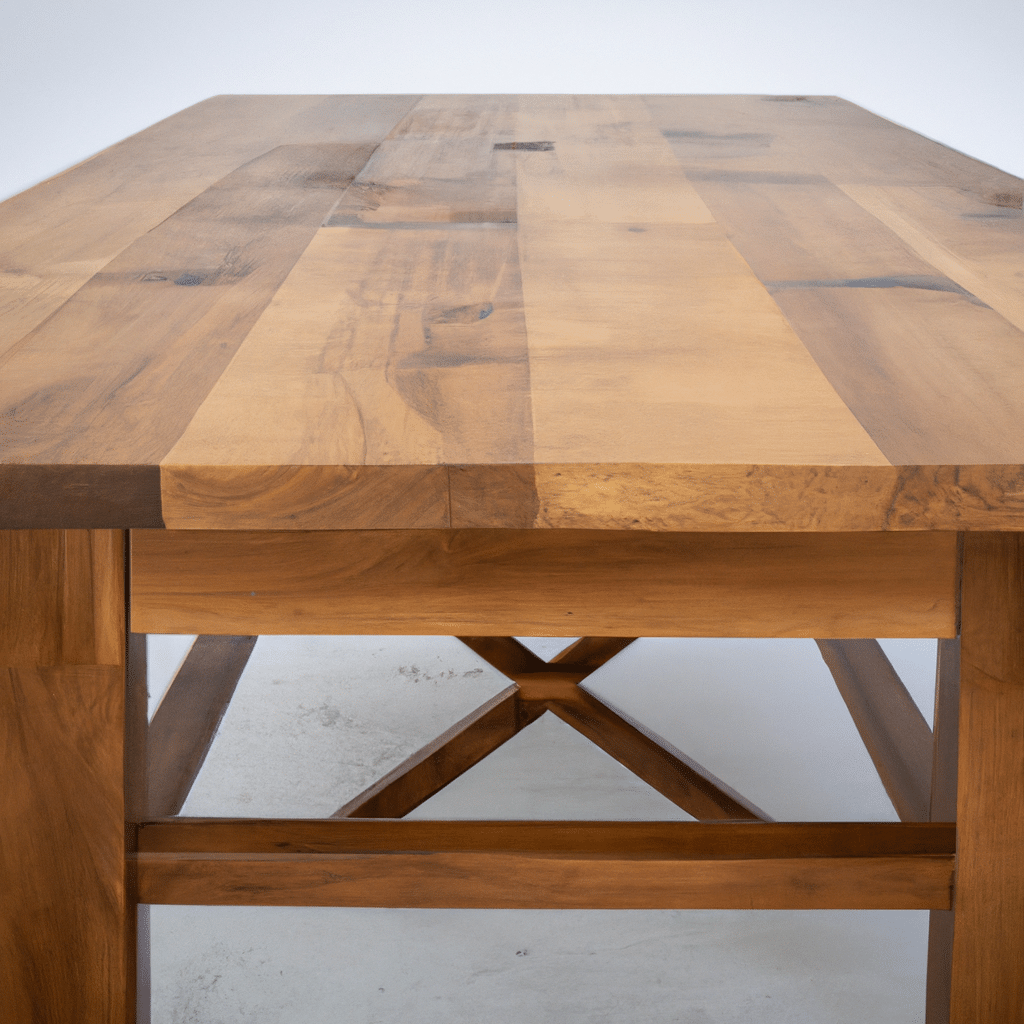Welcome to the ultimate guide on preventing fading and discoloration in real wood furniture. In this comprehensive article, we will explore the various factors that contribute to the fading and discoloration of wood furniture, as well as provide you with effective strategies to protect and maintain the beauty of your prized possessions.

Understanding the Causes of Fading and Discoloration
Real wood furniture is a timeless addition to any home, but it is susceptible to fading and discoloration over time. Understanding the underlying causes of these issues is crucial in implementing preventive measures. Here are some common culprits:
1. Sunlight and UV Rays
One of the primary causes of fading and discoloration in wood furniture is prolonged exposure to sunlight and UV rays. The ultraviolet radiation can penetrate the wood’s surface and break down its natural pigments, resulting in a loss of color saturation and vibrancy.
To minimize the effects of sunlight, consider placing your furniture away from direct sunlight or using window treatments such as curtains or blinds to filter out UV rays. Additionally, applying a protective coat or finish to your furniture can offer an extra layer of defense against UV damage.
2. Heat and Humidity
Extreme temperatures and fluctuations in humidity levels can also contribute to the fading and discoloration of wood furniture. High heat can cause the wood to expand and contract, leading to cracks and warping. Excess humidity, on the other hand, can promote the growth of mold and mildew, which can stain and discolor the surface.
Maintaining a stable indoor environment with controlled temperature and humidity levels is essential for preserving the integrity of your wood furniture. Consider using a dehumidifier or humidifier to regulate humidity levels, especially in areas prone to high moisture.
3. Chemical Exposure
Exposure to harsh chemicals, such as cleaning agents or household solvents, can have adverse effects on the color and finish of wood furniture. These chemicals can strip away the protective layers and cause the wood to become dull and discolored.
When cleaning or treating your wood furniture, opt for gentle and natural cleaning solutions specifically formulated for wood surfaces. Avoid using abrasive materials or strong chemicals that can damage the wood’s natural beauty.
Preventive Measures for Fading and Discoloration
Now that we understand the causes, let’s delve into the preventive measures you can take to ensure your real wood furniture retains its original beauty:
1. Regular Dusting and Cleaning
Dust and dirt can accumulate on the surface of your wood furniture, making it more susceptible to fading and discoloration. Regular dusting using a soft cloth or feather duster can help remove these particles and prevent them from settling into the wood’s pores.
For deeper cleaning, use a mild wood cleaner or a mixture of vinegar and water. Apply the solution to a soft cloth and gently wipe the surface, following the direction of the wood grain. Avoid excessive moisture, as it can seep into the wood and cause damage.
2. Protective Coatings and Finishes
Applying a protective coating or finish to your wood furniture can significantly enhance its resistance to fading and discoloration. There are various options available, such as polyurethane, lacquer, or wax. These coatings create a barrier that shields the wood from UV rays, moisture, and other damaging factors.
Before applying any coating, ensure the furniture is clean and dry. Follow the manufacturer’s instructions for application, and consider reapplying the coating periodically to maintain its effectiveness.
3. Furniture Placement
Strategic placement of your wood furniture can help minimize its exposure to sunlight and other potential sources of damage. Avoid placing your furniture near windows or heat sources, as these can intensify the effects of UV rays and temperature fluctuations.
If moving the furniture is not an option, consider using window film or UV-blocking treatments on your windows to reduce the amount of sunlight that reaches the furniture.
4. Use Protective Coverings
When not in use or during extended periods of absence, consider covering your wood furniture with protective coverings. This will shield it from dust, sunlight, and other external elements that can contribute to fading and discoloration.
Choose breathable coverings made of natural materials, such as cotton or linen, to prevent moisture buildup and allow air circulation. Avoid using plastic or vinyl covers, as they can trap moisture and cause condensation.
5. Regular Maintenance and Inspection
Maintaining a routine maintenance schedule is crucial for identifying and addressing any potential issues before they escalate. Regularly inspect your wood furniture for signs of fading, discoloration, or damage. Promptly address any concerns by applying appropriate treatments or seeking professional assistance if needed.
Additionally, be mindful of any changes in the surrounding environment that may affect your furniture, such as increased humidity or temperature fluctuations. Adjust your preventive measures accordingly to ensure optimal protection.
Conclusion
In conclusion, preventing fading and discoloration in real wood furniture requires a combination of proactive measures and regular maintenance. By understanding the causes and implementing the preventive strategies outlined in this guide, you can ensure that your wood furniture remains vibrant and timeless for years to come.
Remember to shield your furniture from sunlight and UV rays, maintain a stable indoor environment, avoid harsh chemicals, regularly clean and inspect, and apply protective coatings when necessary. With proper care, your real wood furniture will continue to be a cherished centerpiece in your home, unaffected by the passage of time.








